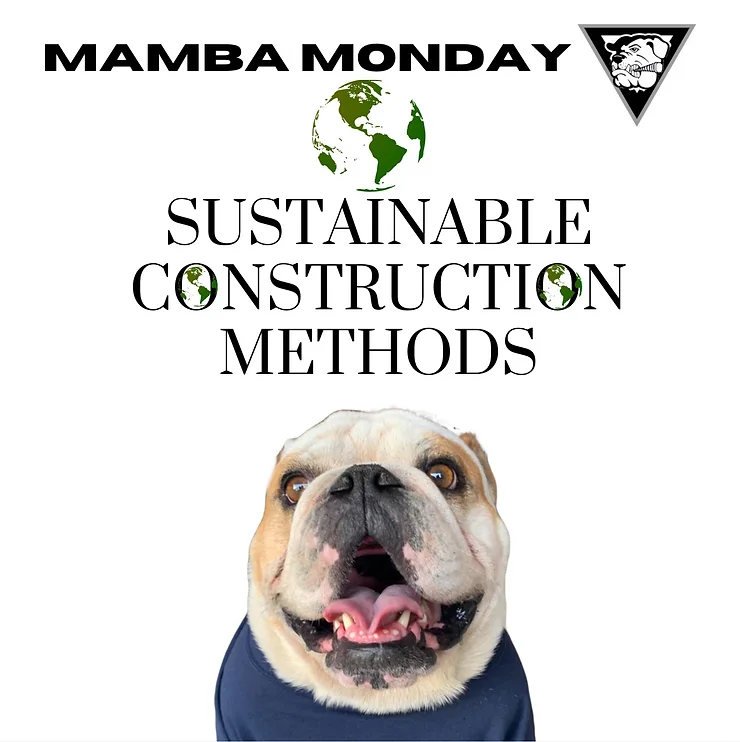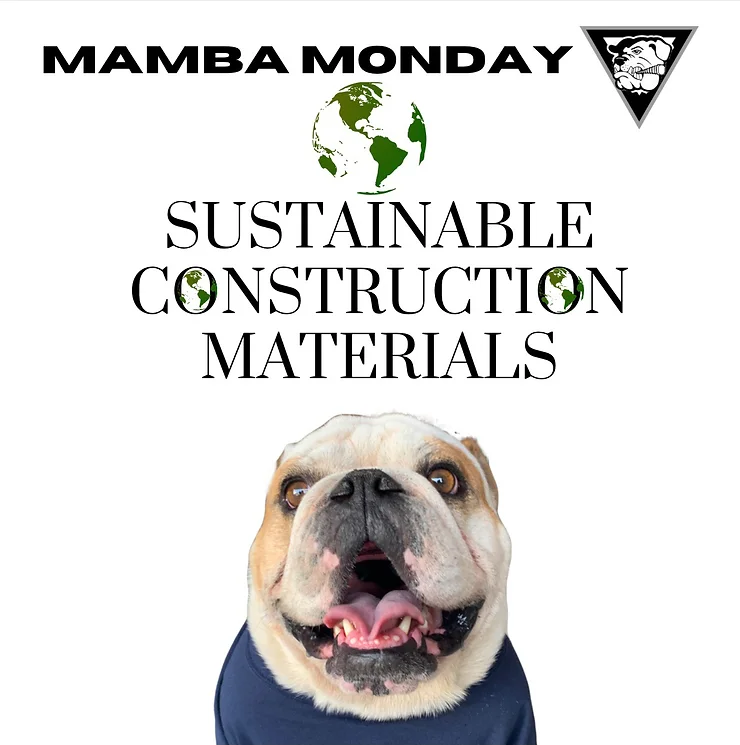This week on #MambaMonday, we are continuing our discussion on sustainability in the construction Industry. More specifically, the materials used in sustainably conscious construction sites.

Now that we know what sustainable construction is, the next question that comes to mind is: HOW is it done?
With the substitution of harmful materials for more eco-friendly materials such as bamboo, rammed earth, wool insulation, atmosphere purifying paint, and even mushrooms, sustainable construction is achievable and even more cost-efficient the long run.
Bamboo
Bamboo is the best alternative to wood. Bamboo is part of the grass family; it regenerates quicker than trees, sometimes growing up to 3 feet per day. Another sustainable aspect being harvesting times. Bamboo can be harvested everything three years compared to trees which can only be harvested every 25-50 years.
Rammed Earth
Rammed earth is used for thermal storage, allowing the sun to warm the rammed earth walls during the day and then slowly release the evening’s warmth. Rammed earth is a low-carbon technique that is now replacing conventional concrete masonry.
Wool Insulation
Unlike conventional insulation, wool insulation has a 10% greater insulation factor that can absorb, retain and release moisture while still keeping its thermal properties. It also pulls harmful chemicals such as formaldehyde, nitrogen oxide, and sulfur oxide out of the air while also being flame retardant, non-toxic, and biodegradable.
Atmosphere Purifying Paint
ECOS Paints have developed a no-VOC ( Volatile Organic Compound) paint containing advanced filtering technology that absorbs and neutralizes chemicals, pollutants, solvents, and VOCs, which works through the molecular sieve. The sieve’s size allows small molecules such as nitrogen-oxygen to pass through while larger molecules become trapped.
Mushrooms
Various mushroom-based materials are used as an alternative to conventional materials, such as insulated fiberglass and concrete. A new development being insulation material which is injected between an interior and exterior wall. Throughout the years the mushroom grows and becomes more robust, causing the walls to eventually need relatively no supporting structure, also doubling as insulation. Another development being Myco boards that look and behave like parcel boards that contain no wood are cheaper, more robust, and lighter, also contain no harmful chemicals such as formaldehyde. Mushrooms have proven to do all this while also being completely compostable.

JC Retrofit Construction August 2020 Inspections
We have compiled photos from our inspections conducted during the month of August 2020. If





